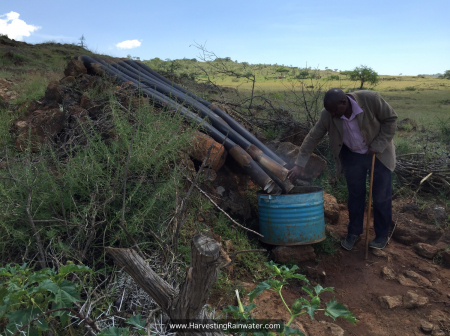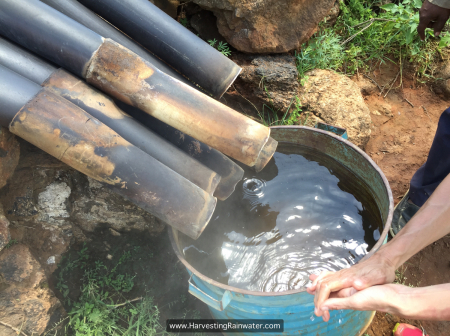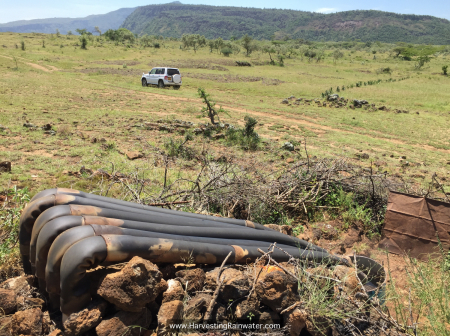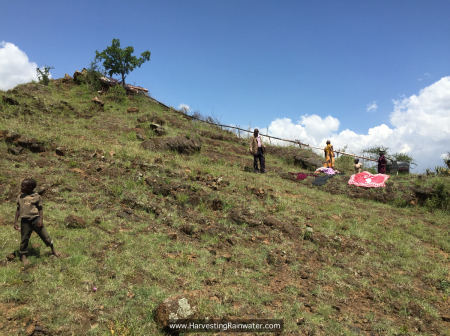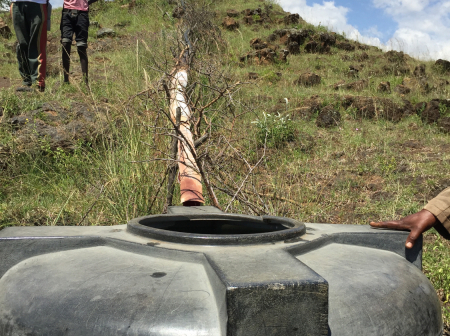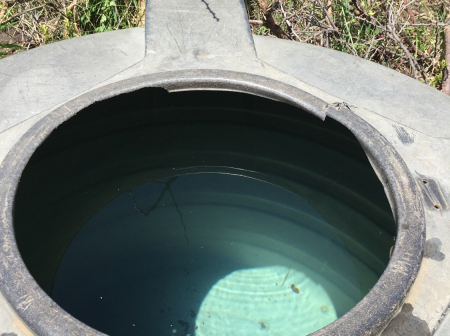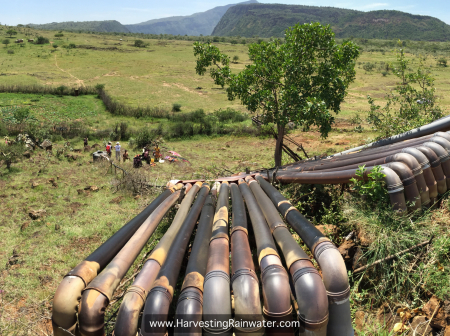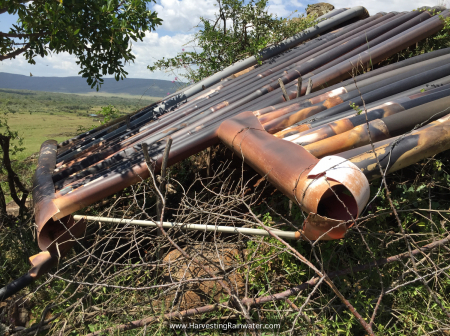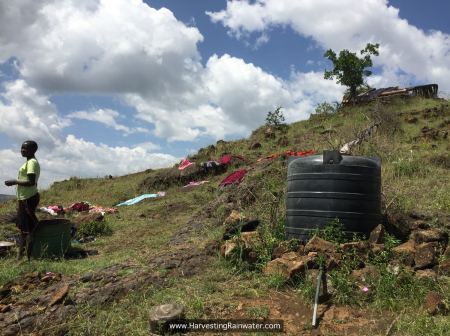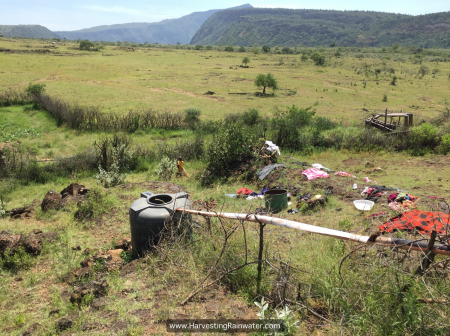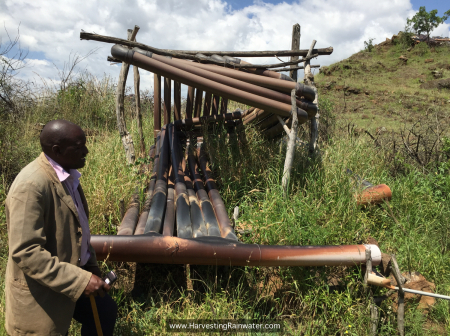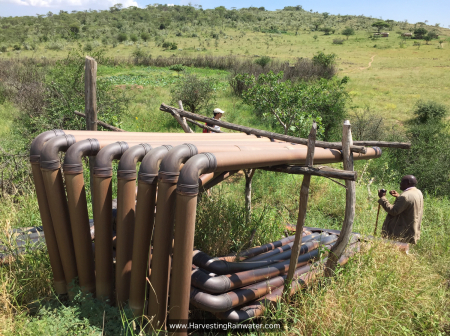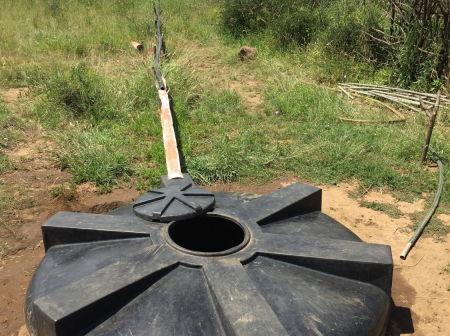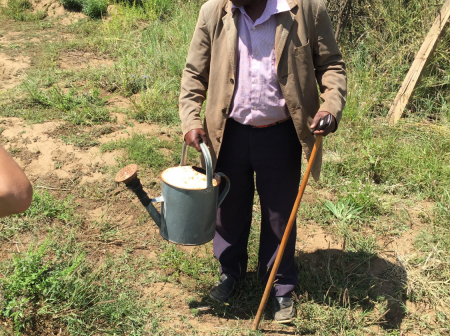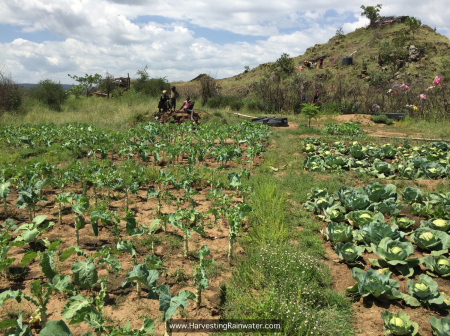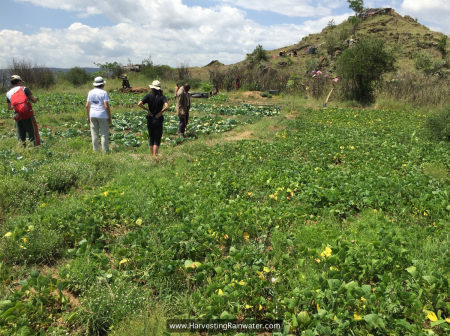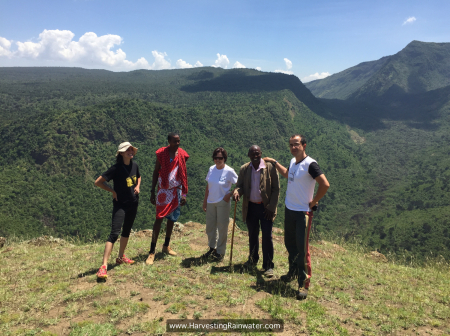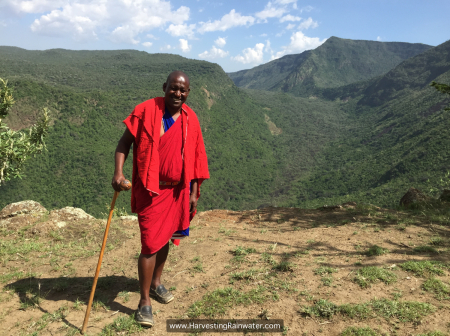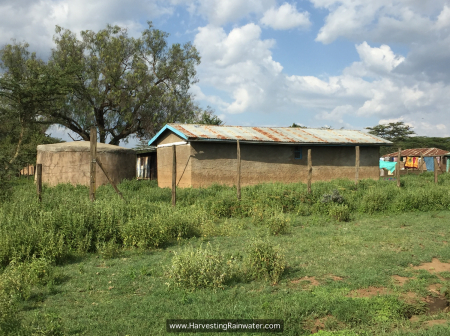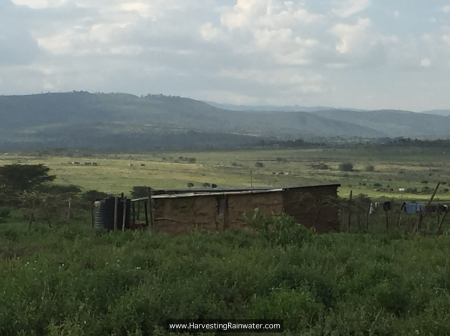DIY Steam Harvesting in Rural Kenya
by Brad Lancaster © 2016
www.HarvestingRainwater.com
Joseph Saitabao saw perennial water where no one else did. He saw it around Mount Suswa, Kenya, where no one lived during the dry season due to the lack of water. During the rainy season, people would get by on rooftop water harvested in tanks, or runoff captured in ephemeral ponds they built. But when tanks and ponds dried up people would leave until the rains returned. Joseph, however, saw untapped water in the form of steam arising from natural vents in the earth.
He got the idea for how to harvest this water by observing a geothermal plant while he was looking for work in another area with steam vents near Hell’s Gate National Park, 100 kilometers away. Undeterred by his lack of formal education, Joseph taught himself how to harvest that steam through innovation and experimentation.
Into a steam vent outlet Joseph inserted a chimney of scavenged plastic pipe that rose a short distance before bending down toward the ground. Steam condensed in the pipe and then started to trickle out the pipe in liquid form. A metal barrel was placed to collect the water.
Joseph discovered that the steam condensed more readily in larger-diameter pipe, and that PVC pipe could handle the heat of the steam. Then he built a new collection chimney of PVC pipes 3 and 4 inches (75 and 100 millimeters) in diameter (figs. 1–3). He was soon harvesting one barrel of water per night in the dry season.
Joseph expanded. He built another condensate chimney at the vent atop the adjoining hill then guttered the water down to a salvaged plastic tank (figs. 4–10). This tank fills with water every two days.
A garden emerges
Joseph first used the water for domestic needs and to water his livestock. Then in 2013, after the installation of a third condensate chimney, he started to grow a garden and food-bearing trees. This installation was his best (figs. 11–13). He found longer lengths of coiled pipe would result in more of the steam condensing, allowing less of it to escape as steam. The condensed water is then directed to a 2,300-liter (600-gallon) buried tank (buried so free gravity could power the water’s flow into the tank). This tank fills every four days.
Water is carried from the tank to the crops with a watering can (fig. 14).
Crops include “Push Awake” kale, cabbage, beans, onions, moringa, pineapple, avocado, and wild food trees (figs. 15 and 16). Our guide Jeremiah, who is Joseph’s brother, explained that the need to grow wild-food trees is growing with more humans and baboons harvesting from those trees. The trees were grown to also act as living fence posts for the garden’s boundary fence. Pruned branches and brush fill out the fence.
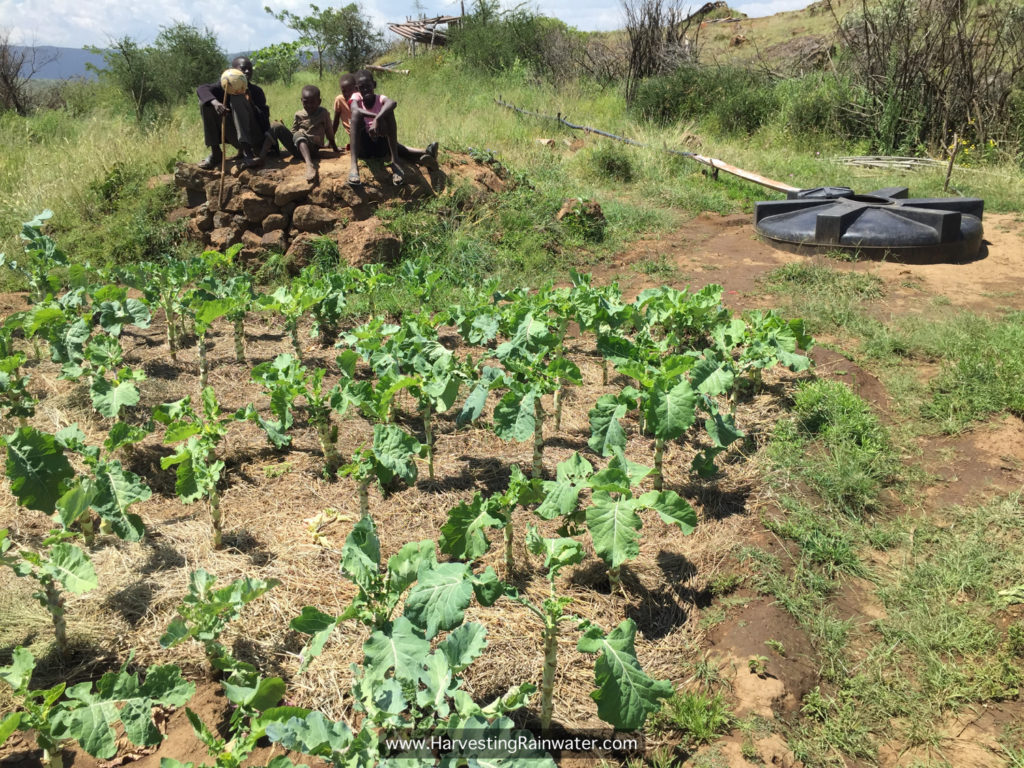
To reduce water consumption, as well as the need to carry water, crops are grown in waffle gardens—basins made by mounding up small berms around their perimeters (fig. 17). This prevents direct rainfall and watering-can water from running away from the plants. In addition, Joseph is starting to mulch the surface of the soil (fig. 17). He calls the mulch “God’s Blanket.” He learned of the benefits of mulch in a workshop on water conservation, and has found it helps produce crops larger than those grown in non-mulched soil.
The local community benefits
No one lived in the area year-round until the year 2000 when Joseph created his first steam harvester. Now perennial residents can take water for free from Joseph’s system if it is for their personal use. But Joseph sells the water to others who use it for animals and to outsiders such as tourists. Only Joseph and his family tend the garden, but he sells extra produce to the community and teaches others how to likewise harvest the steam.
I loved the ingenuity and simplicity of the system and was so grateful for Jeremiah showing it to us all (and for Maite and Alberto making the meeting happen, along with MercyCorps and the TOPS program that had brought me to Africa to teach in Malawi). After visiting Joeseph’s site, Jeremiah, along with hosts Maite, Alberto, a friend, and I then departed to picnic by the Mount Suswa crater.
At the crater, Jeremiah disappeared into the bush and returned changed into his traditional Maasai dress. He was then ready to tell another story.
Jeremiah’s story
I had asked Jeremiah why he had received a formal education, but his elder brother Joseph had not. Jeremiah explained that their father had seven sons and fourteen daughters from three wives, at a time when the Maasai did not like sending their children to school. But the government demanded every household send at least one child to school. Jeremiah was neither the oldest nor the youngest—rather he was younger, smaller, and the son of a wife less favored by their father. Thus he was chosen to go to school. This was usually the case with other families as well. The irony is that today the grown “sacrificed” children are now seen as the most successful.
Jeremiah finished high school and went on to found a school in the community in 2002. All of his nine children are receiving a formal education. Funds from guide services support many of Jeremiah’s community endeavors, including a project begun in 2006 to educate the community on conservation. Much of the common land in the area had already been subdivided, but through the project, the community decided to preserve the area caves and inner crater by keeping them as conservation commons owned by no one.
If in Kenya, you can hire Jeremiah Saitabao Tanin to guide you in the Maasai lands of Mount Suswa. His number there is 254 712 244583.
For a different form of condensate harvesting—condensate harvesting from air conditioners—see here
See the new, full-color, revised editions of Brad’s award-winning books
– available a deep discount, direct from Brad:

Volume 1


